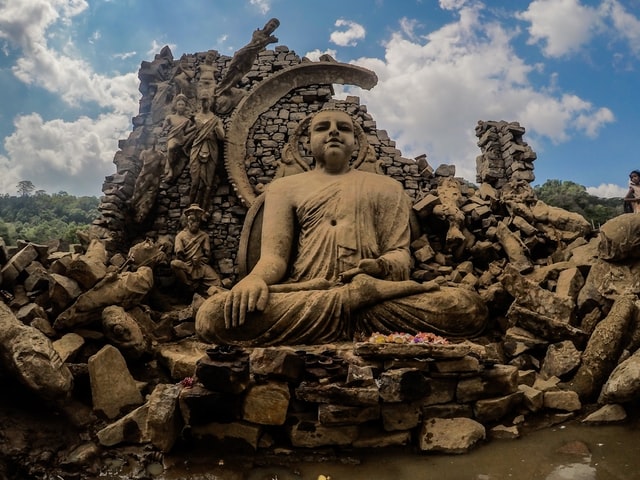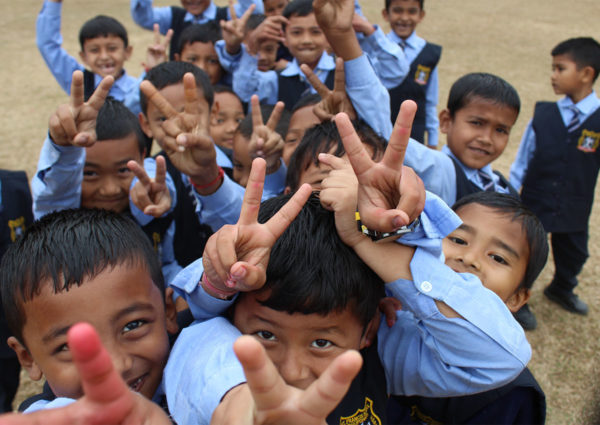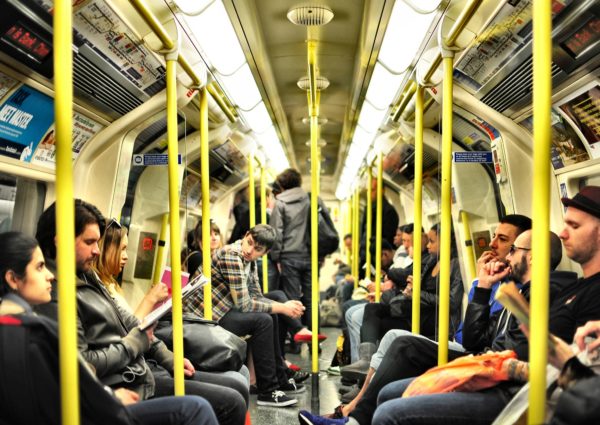“Where foreign capital has been sunk in a country, the administration of that country becomes at once the concern of the bondholders. If the influence of foreign capitalists in the land is allowed to increase, then adieu to all chances of success.”- The Hindu (23 September 1889)
Sri Lanka is experiencing complete chaos induced by its regime’s economic and political decisions. These decisions have generated catastrophic waves in all spheres. The ongoing economic crisis has crippled the nation and brought almost all the economic activities to a standstill. Refugees are flocking to neighboring territories. This economic precipice is no less in comparison to the humanitarian crisis in Europe as a consequence of the Russia-Ukraine war. This small island nation has close proximity to India. And so it becomes relevant and necessary that we learn and understand why Sri Lankan economic crisis happened.
What went wrong?
Pandemic and Tourism
Sri Lanka’s tourism sector holds a major share of the country’s GDP. More importantly, it’s a crucial source of valuable foreign exchange. This sector took a big hit following the Easter day bombings of 2019. The onset of the COVID pandemic in 2020 made it worse with diminishing tourist footfalls. The pandemic’s trickle-down effect triggered a series of disasters that dwindled the forex reserves of the country. The remittances were at an all-time low and the government’s move to devalue the currency to encourage remittances added fuel to the already burning fire.
Politics
The concentration of power is in the hands of a few belonging to a dynasty. Thus the urge to remain in power provided the stimulus to adopt vague and unwise policies. These policies appeared good in the short run. However, they posed a dangerous threat to the economy of the country. For example, the tax cuts incorporated in the election manifesto and their implementation after the election have cost the country’s revenue millions of dollars. Fiscal stability is not just about government spending but also government revenues.
Racial Statistics
Ethnical and racial committees and surveys to gain the vote share of particular pressure groups had back-fired on the revenue. For example, the Archaeological Survey of Sri Lanka validated the contrasting statistics on the population and demography of the Sinhalese and Tamil territories. This created doubts about the re-emergence of the LTTE thus posing an internal security threat.
Debt trap
Sri Lanka has accumulated huge debts as a result of needless construction projects funded by foreign agencies. As a result, they are victims of China’s debt-trap diplomacy owing them billions of dollars. However, as a substitute for repayment, China took Hambanthota port, which is part of the island’s sovereign territory, on lease for 99 years without compensation. As the deal was mediated by dynastic politicians the Sri Lankan government could not simply write off this agreement. If they walked away then it would undermine their popularity in future elections.
Imports
A year ago, the Sri Lankan government stopped importing fertilizers and luxury fashionable items. Although everyone thought it was done with good intentions, the truth was that Sri Lanka was short on forex reserves and therefore could not afford to buy these. In its place, the government encouraged its citizens to move toward organic agriculture and zero-budget natural farming. As a result, the country’s agricultural productivity suffered a serious decline in yields per acre, forcing the regime to import more food. This whole move ended in a fiasco as it added to the already large trade deficit.
Foreign Dependency
A major reason for Sri Lanka’s chaos is its heavy reliance on foreign credit. Its preference for further credit from China to bail it out instead of moving to any centralized financial institution is an example. Thus, as the country plunges into chaos, the bondholders become increasingly concerned about the country’s business and begin to intervene in national politics and policies. For the same reasons, it has been listed as a credit defaulter by the institutions, causing other foreign investors to pull out of the market, thereby reducing the inflows of foreign capital.
Sri Lanka’s Current Situation
At present, Sri Lanka has billions of dollars in debt to the USA, Japan, India, and China, as well as financial institutions like the IMF, World Bank, and Asian Development Bank. It is unable to repay any of these loans anytime soon, so it is seeking bailout assistance from friendly nations. Fuel, paper, food supplies, fertilizers, etc., are in short supply in this country today. Because supply cannot meet demand, the inflation rate is at a record high of over 15%. Whom can it blame for this situation?
Pakistan appears to be following in the footsteps of Sri Lanka, with its inflation rate spiking and growing Chinese-led capital and influence through the CPEC (China Pakistan Economic Corridor) and Gwadar port under Chinese control. If India does not take heed then we too will suffer a similar fate as Sri Lanka.
Inference for India
GDP check
According to the RBI, India’s current debt to GDP ratio is about 90%, which is higher than China, our closest competitor. A higher ratio of debt to GDP indicates a longer period of time for a country to repay its debts. The debt to GDP ratio of Sri Lanka is 104%, an all-time high, although it was just 89% two years ago, so the crisis did not develop suddenly. As things change quickly in the sphere of economics, it is recommended that these debts to GDP ratio limits remain in place.
Freebie culture
Freebies are used by every Indian party, both state and center, to entice voters. These freebies, which range from technical kits to free electricity and direct bank transfers to loan waivers, have increased fiscal debts. Some states give away not just individual freebies, but also corporate freebies. It is necessary for us to figure out which freebies are necessary and which are not. For example, the MNREGA and PDS, and to a degree, the loan waivers in only drought-hit areas, and educational support schemes are freebies that are designed to equip citizens with skills to find employment and generate jobs, i.e., to develop human resources. The unsustainable freebie policies designed to hold on to power are fatal to the nation’s economic progress.
Religious and Social influence
An economic system such as India, with a socialistic inclination, must acknowledge that the two large parties in Sri Lanka, socialists, and communists, have interfered in almost all business activities. This interference hampered the growth of the private sector and resulted in populist policies. It is not permissible for the demands of pressure groups, whether religious or social, to influence the election manifestos in any way.
Import
In order for growth and welfare to coexist, we need sustainable economic policies. With the growing trade deficit, India still relies heavily on imported goods to support its businesses. However, there are policies that can be enacted to make these sectors self-sufficient, or at least partly self-sufficient. The government must support and fund skill development centers and innovation centers to make India AATMA NIRBHAR, and India is on its way, although at a slow pace.
Export
Sri Lanka’s reliance on a single export or import product has caused severe damage and it is recommended that we diversify our exports and imports to withstand the ever-changing global tide. It is imperative that external borrowing is limited and that the funds are managed judiciously. Pressure groups cannot be allowed to force leaders to create policies that endanger the nation’s future.
Security vigilance
Internal security challenges threaten both domestic and foreign investment in areas such as J&K, Punjab, and the North-Eastern states, which require tighter vigilance.
India, a fast-growing economy aiming to make its way into the top 3, could not afford any misleading moves. A country must acknowledge its needs as a whole and not sacrifice its aspirations for the sake of power and money. A judicial or central review of election manifestos is necessary to ensure their necessity and viability. The Freebie culture should be regulated since nothing comes for free in an economy. State governments must be urged to limit their borrowing and restructure their budgets in a way that eliminates corruption. In order for India to become a global player in all spheres, it needs to strengthen its economy, and the path to this is SELF-RELIANCE. We all know that a stitch in time saves nine!
Similar Posts
-
China’s Powerful Economy – Harshvardhan
One of the ideas I suggested in an earlier article was to boycott Chinese products. However before l
-
Republic Day – Hard Core
Here are few responses from friends, family, and relatives across India: Alright, joke
-
China: The Contemporary Conundrum – Harshvardhan
India and China have started trading charges over the Galwan valley border row which climaxed with h
-
Indian Democracy: The Schrödinger’s cat – Harshvardhan
India chose democracy out of all the existing forms of governments. If it wasn’t for our true nation
-
Independence Day – Aditi Bajaj
On this occasion a celebration is Must For this land is so diverse and Just The culture and hospital












Tony Issac
It is worrisome and disturbing reality in Sri Lanka and India. The solution-based approach of the author is appreciated.
Vinod Kumar
Yes, also worried of beside states.